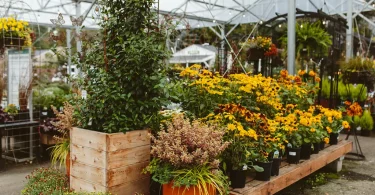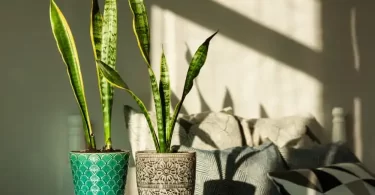Dahlia, because of its numerous varieties and the hardiness of the plant adds color fun, and excitement to every gardener and floral lover. Their flowers go from the diameter of a dinner plate to the size of a pompon, and they decorate gardens from midsummer to the first frost. This, of course, is not an idle claim, and, indeed, recognizing When do Dahlias Bloom implies a certain understanding of their life cycle and the interaction between it and various external factors, as well as some cunning on the part of the gardener.

1. The Basics of Dahlia Growth
Dahlias are herbaceous plants that come from Mexico and the centrality of America only. They belong to the Asteraceae family and include the sunflowers and the daisy family. Dahlias are tuberous plants and this means the plants grow from tubers; this refers to the parts of plants that contain nutrients and energy from which the plant is produced in the spring from the tubers which have accumulated the nutrients and power in the winter.
2. When Do Dahlias Bloom?
The flowering time of dahlias may be influenced by the planting time, dahlias’ variety, and the conditions of growth. Nevertheless, the maximum of dahlia flowers bloom in mid-summer in July and continue to bloom to their heart’s content until autumn comes with the first frost.
Early Varieties vs. Late Varieties:
Dahlias can be divided according to the time they bloom, and the varieties of dahlias available have differences in blooming time. The first-flowering species include ‘Bishop of Llandaff’ or ‘Roxy’ and may bloom as early as June if planted early in spring, especially in warmer regional climates. These varieties are usually comparatively dwarf and have the ability to bloom faster.
Early-blooming varieties will often reach full bloom as early as midsummer, adding vibrant color and life to the garden during the warmest months of the year, while other, later-blooming varieties may not begin to display their full floral splendor until August or even September, extending the flowering season well into the early fall.
Duration of Bloom:
The good thing about dahlias is that once they begin flowering they can last for weeks or even months with proper care and favorable weather. Deadheading is pinching off the dead flowers; it aids in blooming because the plant’s energy is used to create flowers rather than seeds.

3. Factors Influencing Dahlia Bloom’s Time
Unfortunately, several factors determine when dahlias will be in bloom. Knowledge of these can assist gardeners in organizing their gardens and increasing the flowering time. This not only maintains neatness on the plants but also encourages new flowers to grow to replace the aged ones, increasing the duration spent in flowering.
Planting Time:
Depending on the time you plant the tubers, determines when the Dahlia flowers will be in full bloom. It also needs to be mentioned that dahlias are rather sensitive to frost, so they should be planted only after the last date. This is usually done in late April or May for regions that experience colder temperatures with the planting being done earlier in warmer climates to give more time for blooming.
For horticulturists who live in regions where freezing temperatures persist into late spring, it is highly recommended to start dahlia tubers indoors in containers several weeks before the expected last frost date. By doing so, the tubers have a head start on sprouting and establishing strong root systems in a controlled, frost-free environment.

Climate and Temperature:
Dahlia plants require a warm climate and the optimum temperature range for growth and development is during the day which ranges from 70°F and 85°F or 21°C to 29°C. Cooling affects the blooming process in several ways; first, it slows down the blooming process depending on the prevailing temperatures; second, the scorching heat can cause the plants to stunt or cease flowering until the climate becomes more favorable.
Sunlight:
Dahlia plants must get full sun to turn out their best performance. This means they require a minimum of six hours of direct sunlight exposure each day. In regions that are not so sunny, dahlias will bloom later, or they may be fewer in number. Proper positioning of the dahlias is another important factor that you have to take into consideration to ensure that the plant produces a lot of flowers and for a long time as well; this is by ensuring that the flowers are planted in an area that is well exposed to sunlight.
Soil and Fertilization:
The quality of the soil you grow your dahlias in, and the nutrients in the soil also affects the flowering. Dahlia plants grow best in a soil type with good drainage, which also contains an optimum amount of organic material. Some preparation should be done before planting; incorporating compost or balanced fertilizer below the soil would be important for the growth of strong stems and flowery heads of the tubers.

Watering:
However, the requirement of constant moisture is well-adapted in Dahlias so can bloom for the longest time possible. They need frequent irrigation particularly when the climatic conditions are dry. However, I want to prevent water stagnation since the tubers are sensitive to water logging. It is recommended to water the plants thoroughly and seldom, while the bottom of the pot must be dry.
4. Extending the Blooming Season
The ideal time for dahlias is from midsummer to the first frost, but several tactics will help gardeners get as long as possible with beautiful dahlia flowers. During the growing season, the plant requires frequent feeding and to suppress blooming, a low-nitrogen fertilizer should be recommended. he removal of wilted flowers, is also very necessary to encourage growth and flowering.
Succession Planting:
The following are ways of prolonging the blooming season among them the act of succession planting. This is done by planting the dahlia tubers at different intervals – say, a few weeks apart – so that when a set of plants is done with the flowering session, another set is ready to pick up where it left off. It should be noted that this type of stagger can result in blooms from early summer up to fall.
Pinching and Pruning:
Squeezing out the emerging shoots of young dahlia plants makes the plant produce more stems making it full of more flowering stems. It can slightly set back their initial flowering but makes for a better and longer flowering throughout their lifetime. This not only maintains neatness on the plants but also encourages new flowers to grow to replace the aged ones, increasing the duration spent in flowering.

Protecting from Frost:
It is also important to note that in regions where early frosts are common, gardeners can take measures to prolong the blooming period of dahlias by protecting them from light frost. To extend the flowering season as long as possible, especially into late autumn, plants can be covered with frost cloth or garden fleece during chilly nights. This simple step can prevent damage to buds and blossoms, preserving their beauty for weeks longer.
5. The Final Curtain: Tuning to the End of the Season
This is the way dahlias behave as the first frost approaches; they start to bloom progressively and die back to ground level. When the frost has cut off the top growth, the tubers (in cold areas) should be lifted for the winter. This involves severing the stems to allow easy removal of the tubers, using a knife to dig them up, and then packing them in a cool dry place for planting time.

Conclusion
In Japan the focus on the blooming season coinciding with the time of the year when cherry blossoms bloom is one way to celebrate the blooming season. These flowers are summer and fall perennials par excellence and are adored for their flowers in gardens and as cut flowers. Owing to this, any person who grows dahlias can be in a position to optimize the flowers by recognizing the specific season when these flowers bloom as well as other factors that may lead to change in this period. The dahlias are a gardener’s delight, and anyone with a green patch will vouch for the beauty of the blossoms. Read more…



